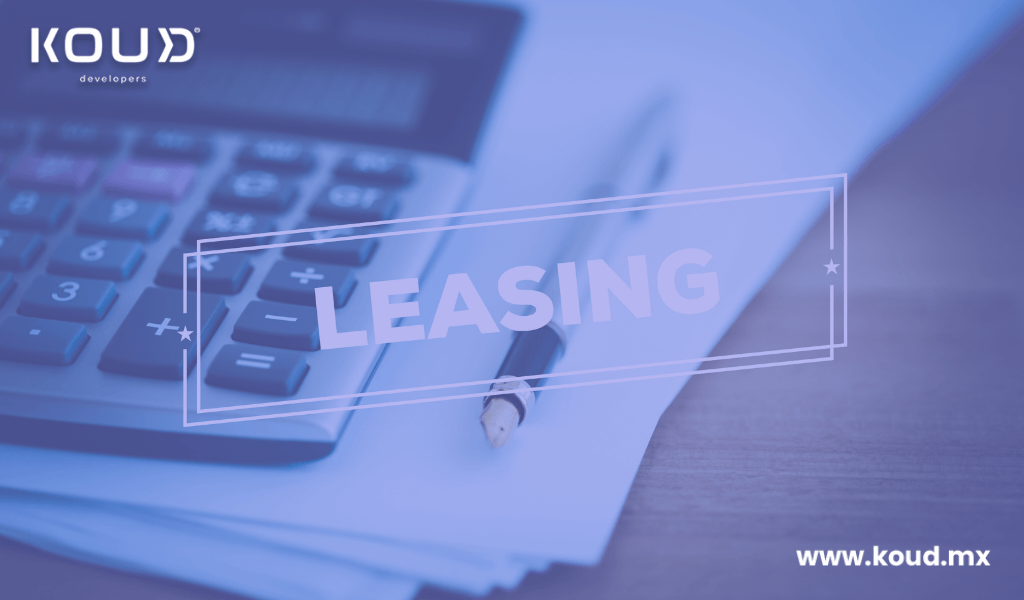Acceso
Registrarse
Software leasing: How can It benefit your business?
In an increasingly digitized business environment, companies need advanced technological tools to stay competitive. However, acquiring cutting-edge software can be expensive, especially for small and medium-sized enterprises (SMEs). This is where software leasing presents itself as a viable alternative. This financing model allows businesses to access high-level software without making a large upfront investment, offering financial flexibility and other operational benefits.
In this article, we’ll explore in detail how software leasing can benefit your business and the factors to consider when opting for this option.
Software leasing How can It benefit your business?
1. What is software leasing?
Software leasing is a financing model that allows businesses to use software under a lease contract. Unlike traditional purchases, in leasing, you don’t acquire ownership of the software; instead, you pay a periodic fee (monthly or annually) for the right to use it for a specific period. At the end of the contract, the company can choose to renew the lease, upgrade the software, or, in some cases, buy the license outright.
2. Benefits of software leasing
Software leasing offers several key advantages, especially in terms of financial and operational flexibility. Here are the main benefits:
a) Reduced initial investment
One of the biggest advantages of software leasing is that it eliminates the need for a significant upfront investment. Instead of paying the full cost of a software license upfront, companies can spread the cost over time with periodic payments. This is especially useful for businesses with tight budgets or those that prefer to allocate their capital to other areas of the business.
b) Access to cutting-edge technology
Leasing allows businesses to access state-of-the-art software without incurring the high acquisition costs. This is crucial in a rapidly changing technological world where software solutions can quickly become outdated. With leasing, companies can upgrade their software at the end of the contract and always stay current with the latest innovations.
c) Flexibility and continuous updates
By opting for software leasing, businesses can access ongoing updates and improvements at no additional cost. This ensures that they always have the latest, most secure version of the software, which enhances productivity and reduces risks associated with security vulnerabilities in outdated versions.
d) Savings on maintenance and support
Software leasing often includes technical maintenance and support as part of the contract. This means that companies won’t need to worry about additional support costs or potential software interruptions, as these tasks will be covered by the provider.
e) Better cash flow management
Leasing allows for better cash flow management, as periodic payments are more predictable and manageable than a large upfront investment. This helps companies maintain liquidity and allocate capital to other strategic investments.
3. When should you consider software leasing?
Software leasing is not suitable for every business, but it’s a valuable option in certain cases. You should consider leasing if:
- Your company is growing: If your business is in an expansion phase and needs advanced technology to compete but lacks the capital to purchase the software.
- You need flexibility: If you want to avoid the risk of purchasing software that may become obsolete and prefer the flexibility to change solutions at the end of the contract.
- You want to improve financial management: If leasing helps you better manage cash flow and reduce initial costs, it could be the ideal option for you.
4. Factors to consider when opting for software leasing
Before opting for software leasing, there are some factors you need to consider to ensure it’s the right choice for your business:
- Contract duration: Make sure the contract term aligns with your business needs. Some leasing contracts are short-term, while others may be longer, requiring you to keep the software longer than you need.
- Renewal or purchase terms: Investigate whether the contract includes options to renew the lease or purchase the software at the end of the contract.
- Additional costs: Some leasing contracts may include additional costs for updates or maintenance, so be sure to read the contract details carefully.
- Scalability: If your business plans to grow, ensure that the software and the leasing contract can adjust to your future technological needs.
5. Alternatives to software leasing
Although software leasing offers many advantages, it’s important to also consider other available alternatives, such as Software as a Service (SaaS) or direct purchase. Each option has its own benefits and limitations, so it’s essential to evaluate which one fits best with your company’s strategy and needs.
- SaaS: The SaaS model allows you to pay a subscription to use cloud-based software without the need to install it locally. It’s a flexible and scalable option.
- Direct purchase: If you have the necessary resources and the software will be used long-term, direct purchase may be more cost-effective in the long run.
In Conclusion Software leasing is an excellent option for companies that want to access advanced technology without the financial burden of a significant initial investment. It offers flexibility, access to updates, and better cash flow management, making it an attractive solution for many growing businesses. However, before making a decision, it’s important to evaluate your specific needs and consider all available options, such as SaaS or direct purchase, to ensure you’re making the best decision for your company’s future.
Empresa
- Nosotros somos
Somos una empresa mexicana con más de 12 años de trayectoria en la industria
Servicios
- Desarrollo de software a la medida
- Staffing TI
- Headhuntiong TI
Contacto
- +52 1 33 2342 9770
- Correo: build-up.devs@koud.mx



